About this threat
Search Encrypt is a questionable browser extension, and a browser hijacker. It will enter your computer uninvited, change your browser’s settings, and possibly try to redirect you to sponsored websites. It is advertised as a private search plug-in, as it claims to not track your searches in any way, you could have downloaded it willingly.
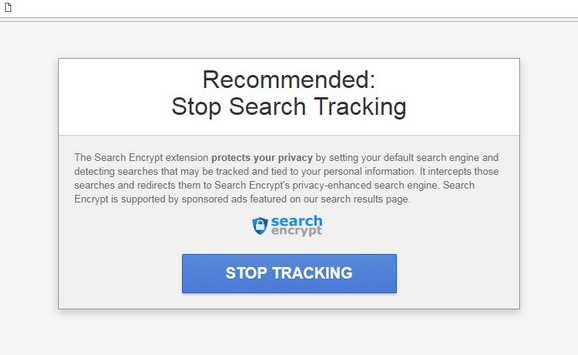
But is also seems to be spread via freeware bundles. Programs coming bundled with something else is not unusual, and because those bundles are unnoticeable, a lot of users end up installing something they do not want. While this is not a malicious infection, if it entered your computer without your explicit permission, it should not be allowed to remain. A search engine keeping your searches private certainly sounds like a useful extension to have but you need to look into it properly before you choose to allow it to remain installed. Hijackers aim to redirect users to sponsored sites so beware of this extension doing the same thing. If you see sponsored content in the results, do not click on it/them.
How did it infect your computer?
The infection was added to freeware, as an additional offer. It can install without the users even knowing, and that is why some users are confused about how it appeared. When you install programs, choose Advanced or Custom settings, and everything that has been added will become visible. Those items are usually useless to you, thus are hidden, so it’s not recommended to allow them to install. Pay attention to the installation process, read everything, and opt out of using Default settings. You should then be able to see the offers. When they become visible in Advanced, uncheck the boxes. Deselecting all the boxes is recommended. You can also get it from the Chrome store but after reading the couple of reviews, it is less likely.
What does it do?
You will notice an infection almost immediately. It will change your browser’s settings so that your homepage and new tabs are set as searchencrypt.com. Your default search engine may also be changed, and these changes may be irreversible unless you first delete Search Encrypt from the computer. These changes may be carried out without your explicit permission, if you did not install it willingly. Since it is advertised as a private search tool, it’s possible users downloaded it themselves, in which case they would be aware of the changes. The site set as your homepage is very simple, it merely has a search engine in the middle and the tittle above it. You will be prompted to use the search engine but be careful. While it may be encrypting your searches and keeping your browsing private, it could also be inserting sponsored content into the results to redirect you. Hijackers do this because they aim to help the owners of those sites earn money from traffic. Those sponsored results will be pretty obvious, they usually have nothing to do with your searches. It should also be mentioned that some sites that hijackers redirect to could be malware-ridden. You could end up with some kind of malware and not even know it. This would be why we would recommend choosing a different search engine.
Search Encrypt removal
Browser hijackers are not difficult to get rid of, whether you do it manually or automatically. Manual elimination may take more time than you first think because you will have to find its location yourself, but if you are struggling, you are welcome to use the below provided instructions. If you follow them accordingly, you should be able to fully remove Search Encrypt. If you are having a hard time doing it, you can also do it automatically. Obtain anti-spyware software, allow it to scan your computer, and have it uninstall Search Encrypt for you. You can then proceed to change your browser’s settings back to normal.
Offers
Download Removal Toolto scan for Search EncryptUse our recommended removal tool to scan for Search Encrypt. Trial version of provides detection of computer threats like Search Encrypt and assists in its removal for FREE. You can delete detected registry entries, files and processes yourself or purchase a full version.
More information about SpyWarrior and Uninstall Instructions. Please review SpyWarrior EULA and Privacy Policy. SpyWarrior scanner is free. If it detects a malware, purchase its full version to remove it.

WiperSoft Review Details WiperSoft (www.wipersoft.com) is a security tool that provides real-time security from potential threats. Nowadays, many users tend to download free software from the Intern ...
Download|more


Is MacKeeper a virus? MacKeeper is not a virus, nor is it a scam. While there are various opinions about the program on the Internet, a lot of the people who so notoriously hate the program have neve ...
Download|more


While the creators of MalwareBytes anti-malware have not been in this business for long time, they make up for it with their enthusiastic approach. Statistic from such websites like CNET shows that th ...
Download|more
Quick Menu
Step 1. Uninstall Search Encrypt and related programs.
Remove Search Encrypt from Windows 8
Right-click in the lower left corner of the screen. Once Quick Access Menu shows up, select Control Panel choose Programs and Features and select to Uninstall a software.


Uninstall Search Encrypt from Windows 7
Click Start → Control Panel → Programs and Features → Uninstall a program.
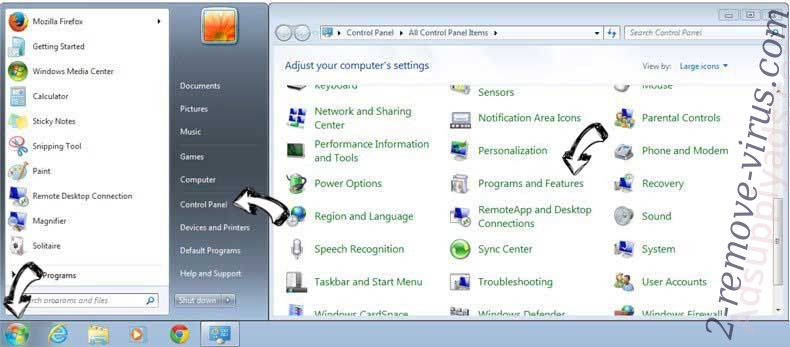

Delete Search Encrypt from Windows XP
Click Start → Settings → Control Panel. Locate and click → Add or Remove Programs.


Remove Search Encrypt from Mac OS X
Click Go button at the top left of the screen and select Applications. Select applications folder and look for Search Encrypt or any other suspicious software. Now right click on every of such entries and select Move to Trash, then right click the Trash icon and select Empty Trash.


Step 2. Delete Search Encrypt from your browsers
Terminate the unwanted extensions from Internet Explorer
- Tap the Gear icon and go to Manage Add-ons.


- Pick Toolbars and Extensions and eliminate all suspicious entries (other than Microsoft, Yahoo, Google, Oracle or Adobe)

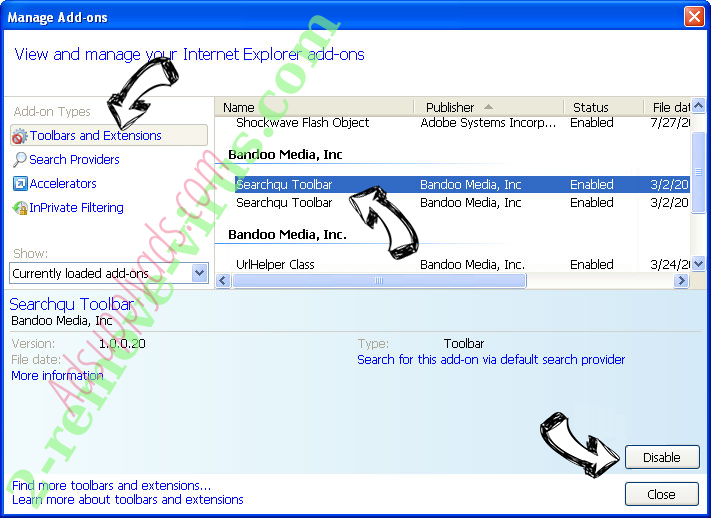
- Leave the window.
Change Internet Explorer homepage if it was changed by virus:
- Tap the gear icon (menu) on the top right corner of your browser and click Internet Options.

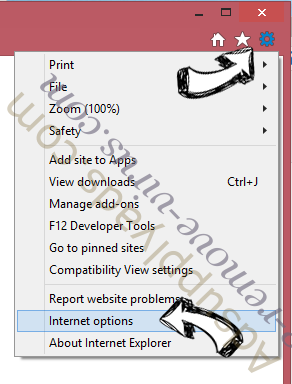
- In General Tab remove malicious URL and enter preferable domain name. Press Apply to save changes.


Reset your browser
- Click the Gear icon and move to Internet Options.

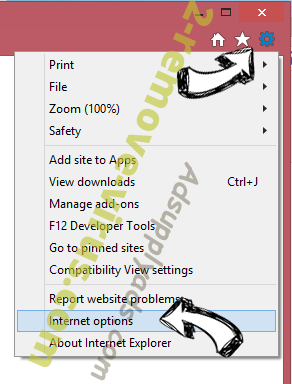
- Open the Advanced tab and press Reset.

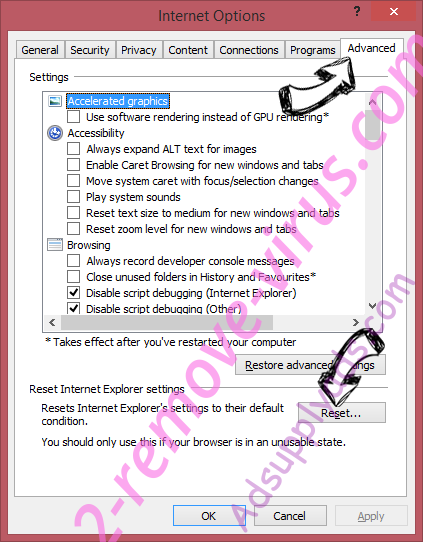
- Choose Delete personal settings and pick Reset one more time.


- Tap Close and leave your browser.


- If you were unable to reset your browsers, employ a reputable anti-malware and scan your entire computer with it.
Erase Search Encrypt from Google Chrome
- Access menu (top right corner of the window) and pick Settings.


- Choose Extensions.

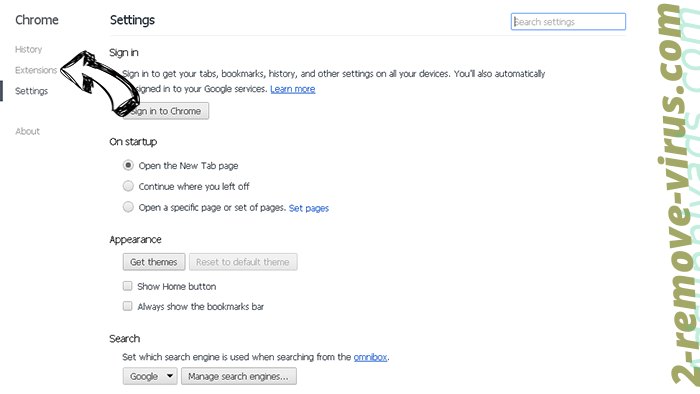
- Eliminate the suspicious extensions from the list by clicking the Trash bin next to them.


- If you are unsure which extensions to remove, you can disable them temporarily.

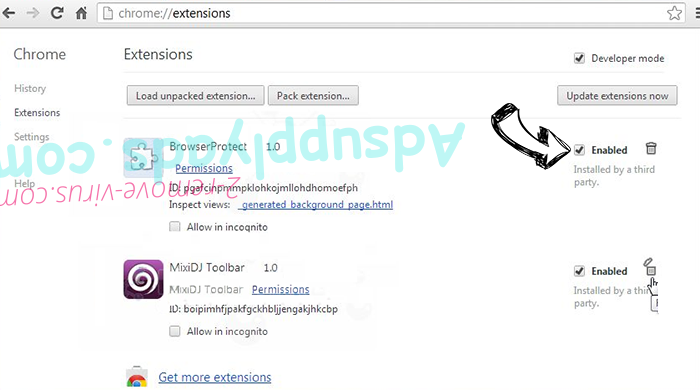
Reset Google Chrome homepage and default search engine if it was hijacker by virus
- Press on menu icon and click Settings.

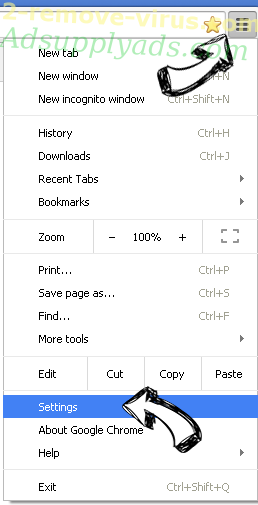
- Look for the “Open a specific page” or “Set Pages” under “On start up” option and click on Set pages.

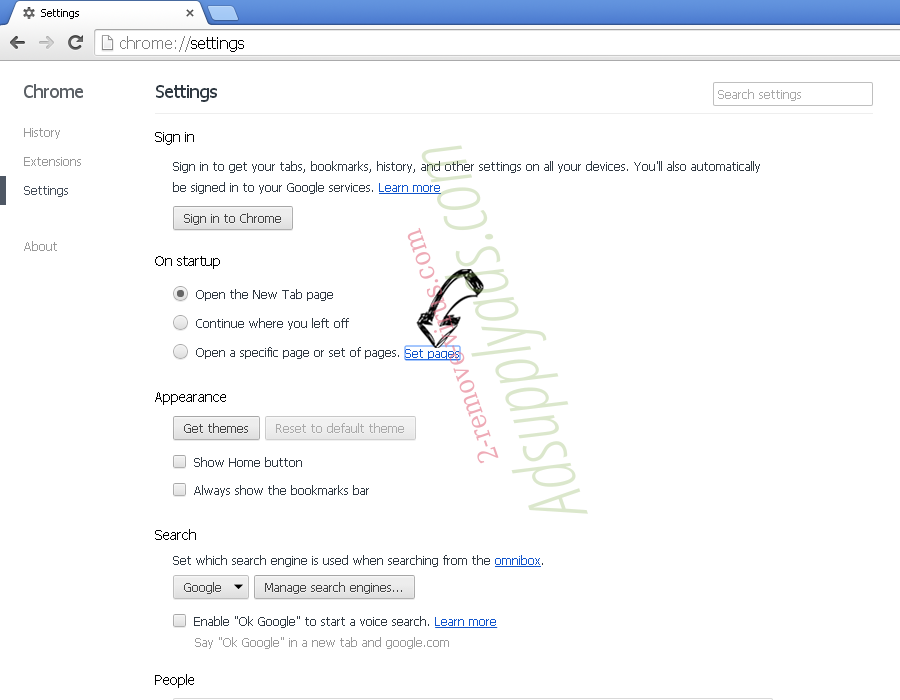
- In another window remove malicious search sites and enter the one that you want to use as your homepage.


- Under the Search section choose Manage Search engines. When in Search Engines..., remove malicious search websites. You should leave only Google or your preferred search name.

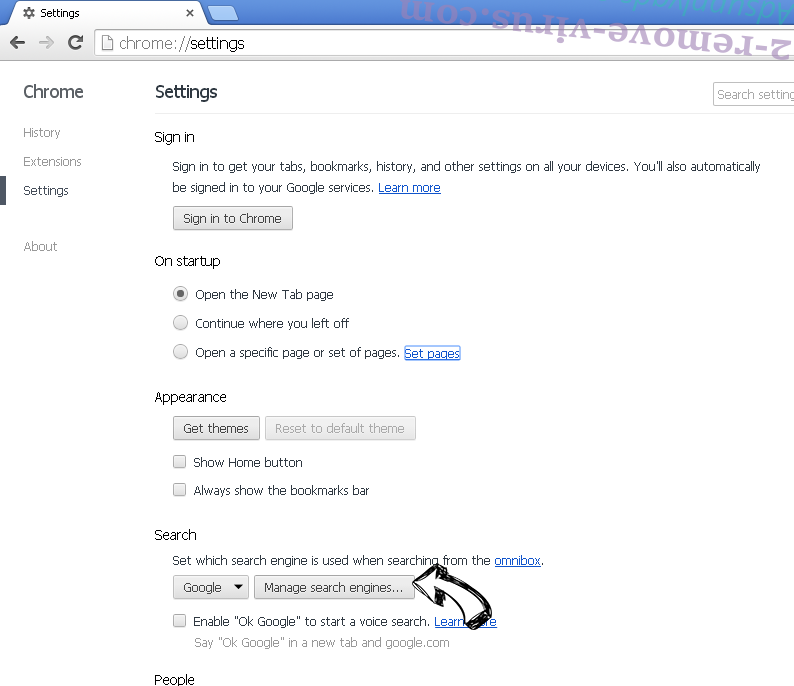

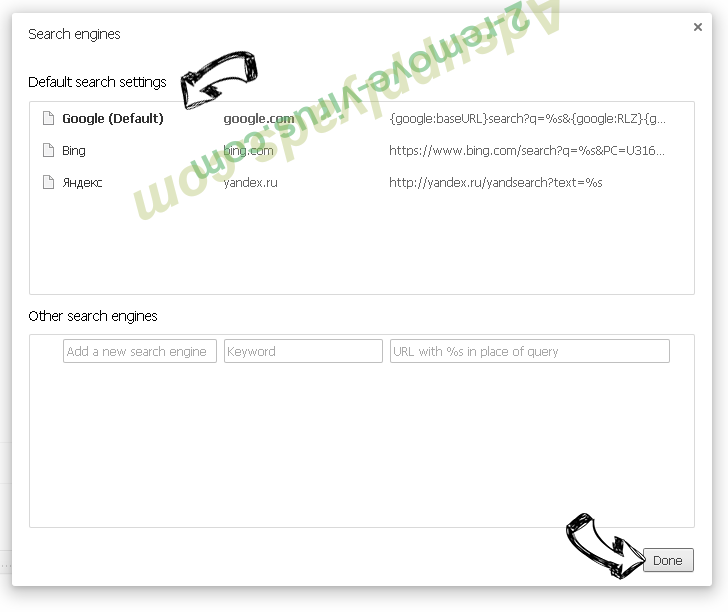
Reset your browser
- If the browser still does not work the way you prefer, you can reset its settings.
- Open menu and navigate to Settings.

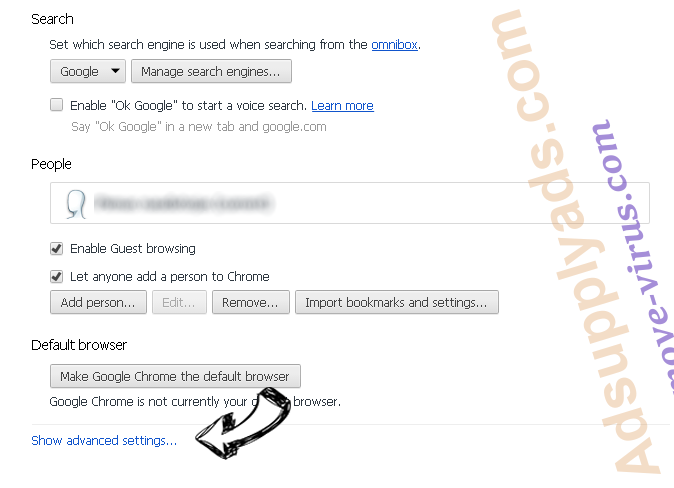
- Press Reset button at the end of the page.

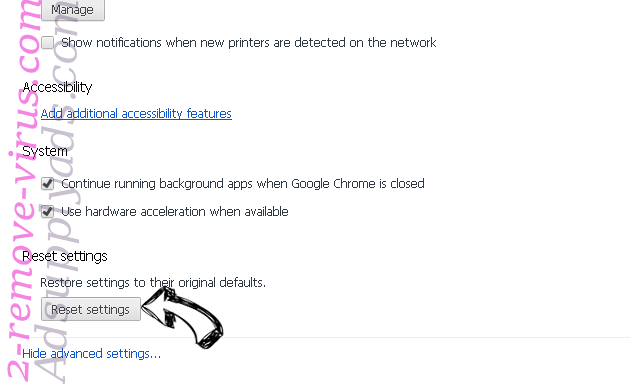
- Tap Reset button one more time in the confirmation box.

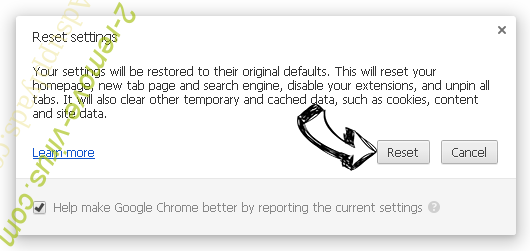
- If you cannot reset the settings, purchase a legitimate anti-malware and scan your PC.
Remove Search Encrypt from Mozilla Firefox
- In the top right corner of the screen, press menu and choose Add-ons (or tap Ctrl+Shift+A simultaneously).

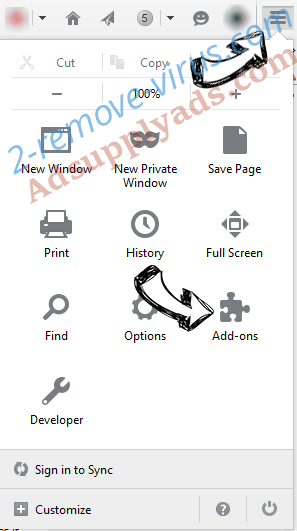
- Move to Extensions and Add-ons list and uninstall all suspicious and unknown entries.

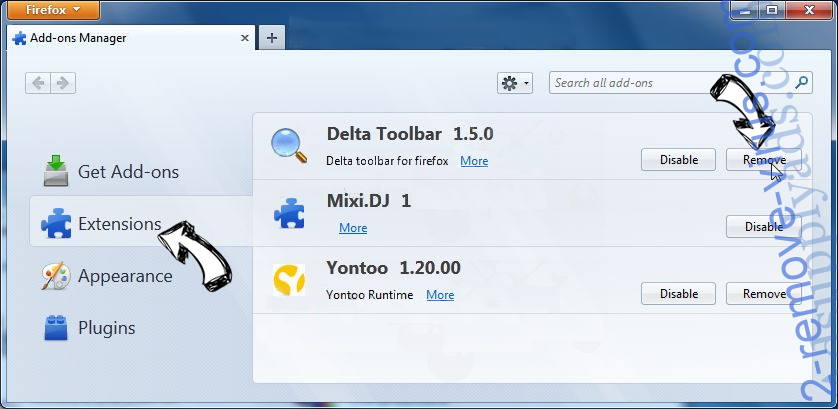
Change Mozilla Firefox homepage if it was changed by virus:
- Tap on the menu (top right corner), choose Options.


- On General tab delete malicious URL and enter preferable website or click Restore to default.


- Press OK to save these changes.
Reset your browser
- Open the menu and tap Help button.


- Select Troubleshooting Information.


- Press Refresh Firefox.


- In the confirmation box, click Refresh Firefox once more.


- If you are unable to reset Mozilla Firefox, scan your entire computer with a trustworthy anti-malware.
Uninstall Search Encrypt from Safari (Mac OS X)
- Access the menu.
- Pick Preferences.


- Go to the Extensions Tab.

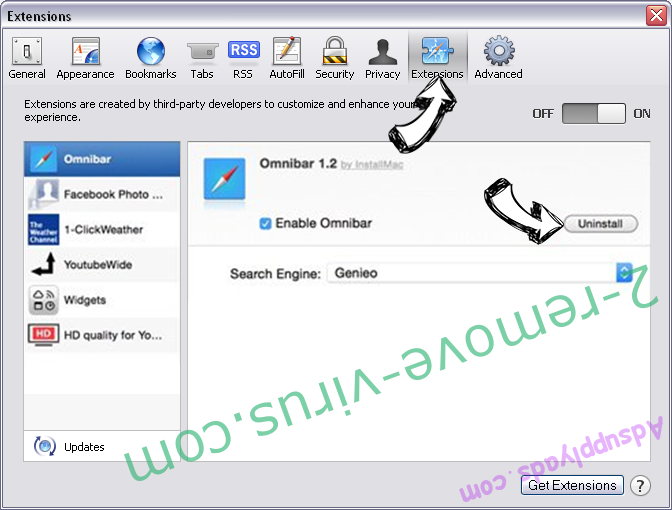
- Tap the Uninstall button next to the undesirable Search Encrypt and get rid of all the other unknown entries as well. If you are unsure whether the extension is reliable or not, simply uncheck the Enable box in order to disable it temporarily.
- Restart Safari.
Reset your browser
- Tap the menu icon and choose Reset Safari.

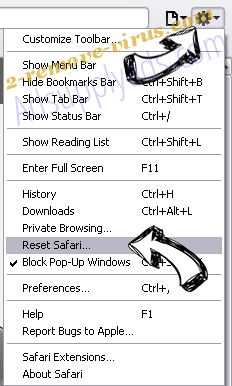
- Pick the options which you want to reset (often all of them are preselected) and press Reset.


- If you cannot reset the browser, scan your whole PC with an authentic malware removal software.
Site Disclaimer
2-remove-virus.com is not sponsored, owned, affiliated, or linked to malware developers or distributors that are referenced in this article. The article does not promote or endorse any type of malware. We aim at providing useful information that will help computer users to detect and eliminate the unwanted malicious programs from their computers. This can be done manually by following the instructions presented in the article or automatically by implementing the suggested anti-malware tools.
The article is only meant to be used for educational purposes. If you follow the instructions given in the article, you agree to be contracted by the disclaimer. We do not guarantee that the artcile will present you with a solution that removes the malign threats completely. Malware changes constantly, which is why, in some cases, it may be difficult to clean the computer fully by using only the manual removal instructions.
